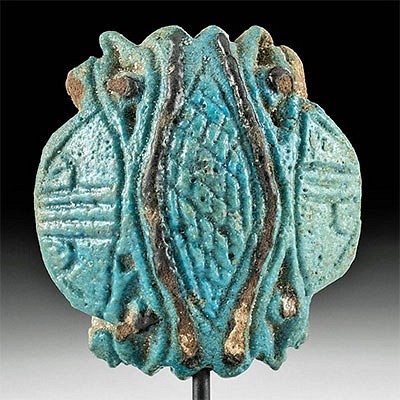Chinese Han Dynasty Terracotta Dog Figure
Lot 98
About Seller
Artemis Gallery
686 S Taylor Ave, Ste 106
Louisville, CO 80027
United States
Selling antiquities, ancient and ethnographic art online since 1993, Artemis Gallery specializes in Classical Antiquities (Egyptian, Greek, Roman, Near Eastern), Asian, Pre-Columbian, African / Tribal / Oceanographic art. Our extensive inventory includes pottery, stone, metal, wood, glass and textil...Read more
Categories
Estimate:
$3,000 - $5,000
Absentee vs Live bid
Two ways to bid:
- Leave a max absentee bid and the platform will bid on your behalf up to your maximum bid during the live auction.
- Bid live during the auction and your bids will be submitted real-time to the auctioneer.
Bid Increments
| Price | Bid Increment |
|---|---|
| $0 | $25 |
| $300 | $50 |
| $1,000 | $100 |
| $2,000 | $250 |
| $5,000 | $500 |
| $10,000 | $1,000 |
| $20,000 | $2,500 |
| $50,000 | $5,000 |
| $100,000 | $10,000 |
| $200,000 | $20,000 |
About Auction
By Artemis Gallery
May 27, 2021
Set Reminder
2021-05-27 10:00:00
2021-05-27 10:00:00
America/New_York
Bidsquare
Bidsquare : CLEARANCE | Antiquities & Ethnographic Art
https://www.bidsquare.com/auctions/artemis-gallery/clearance-antiquities-ethnographic-art-7010
Featuring discounted pricing and many new items! Asian art, Classical antiquities from Egypt, Greece, Italy, and the Near East...plus Pre-Columbian, Tribal, Russian Icons & Enamelware, Spanish Colonial, Fine Art, more! Some starting prices have been reduced up to 65% from original auction prices! Artemis Gallery info@artemisgallery.com
Featuring discounted pricing and many new items! Asian art, Classical antiquities from Egypt, Greece, Italy, and the Near East...plus Pre-Columbian, Tribal, Russian Icons & Enamelware, Spanish Colonial, Fine Art, more! Some starting prices have been reduced up to 65% from original auction prices! Artemis Gallery info@artemisgallery.com
- Lot Description
**Originally Listed At $2000**
East Asia, China, Han Dynasty, ca. 206 BCE to 220 CE. An alert dog with a strong, protective stance and a fierce disposition, made from baked terracotta. His sturdy legs support his barrel-shaped body, that has a circular vent on the underside. He has a tense energy, with a curved tail that lays against his haunches, and perky ears. Traces of red pigment detail the harness around his neck, chest, and shoulders. This guardian pup most likely belonged to an elite individual worthy of such devout protection! Size: 11" L x 4" W x 9" H (27.9 cm x 10.2 cm x 22.9 cm)
Han Dynasty sculptors recreated various breeds of dogs in their artwork, and this example is a chow dog, who are often shown with harnesses and collars because they were used to pull small sleighs. During the Han Dynasty, such ceramic dog statues were used as a tomb guardians to protect the master's grave. All Han Dynasty pottery dogs were formed by two-part molds. Once the main form was attained, details such as eyebrows and whiskers were added. We see more dogs appearing in the later Han period, frequently in tombs. This is most likely because during this period the landed gentry lived on large estates and needed dogs to keep guard. The dog also makes an appearance on jade carvings of hounds during the Han Dynasty; hence, dogs apparently were cherished as a status symbol.
Provenance: ex-Barakat Gallery, Beverly Hills, California, USA, acquired prior to 2000
All items legal to buy/sell under U.S. Statute covering cultural patrimony Code 2600, CHAPTER 14, and are guaranteed to be as described or your money back.
A Certificate of Authenticity will accompany all winning bids.
We ship worldwide and handle all shipping in-house for your convenience.
#161718Repaired from multiple large pieces with visible hairline fissures radiating from stomach and head. Repairs are well done. Chips to high pointed areas, abrasion on left front shoulder. Traces of painted pigment and encrusted mineral deposits on much of the surface.Condition
- Shipping Info
-
All shipping is handled in-house for your convenience. Your invoice from Artemis Gallery will include shipping calculation instructions. If in doubt, please inquire BEFORE bidding for estimated shipping costs for individual items.
-
- Buyer's Premium



 EUR
EUR CAD
CAD AUD
AUD GBP
GBP MXN
MXN HKD
HKD CNY
CNY MYR
MYR SEK
SEK SGD
SGD CHF
CHF THB
THB















